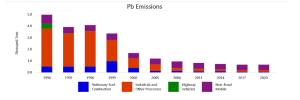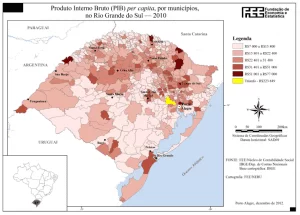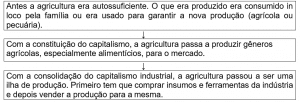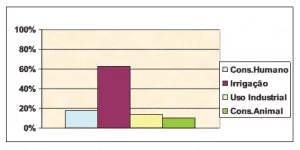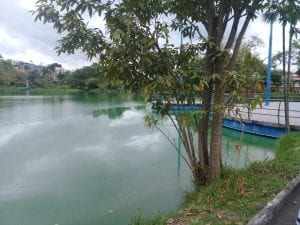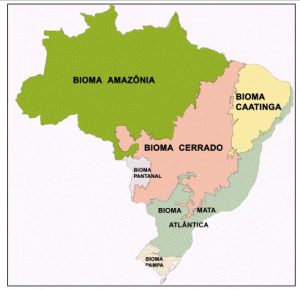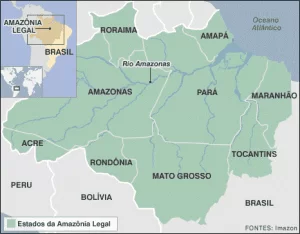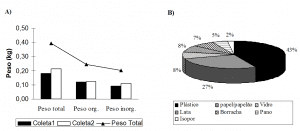ARTIGO ORIGINAL
CANTON, Andressa Guarnieri [1], LASKOSKI, Larissa Valéria [2], BANDEIRA, Debora Marina [3], ROSSET, Jéssica [4], FEITOSA, Amanda Janaina Gonsatti [5], PINTO, Fabiana Gisele da Silva [6]
CANTON, Andressa Guarnieri et al. Biological activities and phytochemical prospection of plant extracts of Myrsine Umbellata mart. Revista Científica Multidisciplinar Núcleo do Conhecimento. Year 09, Ed. 01, Vol. 02, pp. 18-32. January 2024. ISSN: 2448-0959, Access link: https://www.nucleodoconhecimento.com.br/environment/myrsine-umbellata, DOI: 10.32749/nucleodoconhecimento.com.br/environment/myrsine-umbellata
ABSTRACT
Myrsine umbellata is a Brazilian native species from the Primulaceae family, popularly known as “Capororocão.” Considering that plants have been used to treat various illnesses, explaining interest in research with Brazilian native species in the search for plant bioactives with biological potential that can act on the control of pathogenic microorganisms. Thus, the present study aimed to identify the phytochemical compounds of the leaves of the native species M. umbellata, as well as to evaluate the antimicrobial potential of Methanolic (ME), Acetonic (AE), Ethanolic (EE), and Hexanic (HE) plant extracts against bacteria of clinical and veterinary importance. The presence of secondary metabolites was analyzed by observing color changes or precipitate formation reactions, and the antimicrobial activity was determined by broth microdilution methodology. Through phytochemical prospecting, the presence of nine classes of metabolites was detected: tannins, saponins, free steroids, alkaloids, anthocyanins, anthocyanidins, flavones, flavonoids, and flavanonols. The extracts exhibited antimicrobial activity against all tested strains. ME showed the best MIC results for the standard strains. The most susceptible strains were gram-positive: Staphylococcus epidermidis and Enterococcus faecalis and gram-negative: Salmonella enterica Typhimurium, Pseudomonas aeruginosa, Proteus mirabilis besides the yeast Candida albicans. The results indicate that the species M. umbellata shows the potential for isolating natural bioactives and the potential development of products such as non-synthetic antimicrobials.
Keywords: Antimicrobial activity, Natural products, Phytochemistry, Medically important bacteria.
1. INTRODUCTION
Brazilian biomes are synonymous with biodiversity, standing out due to the vast number of species and their distribution, with this diversity accounting for nearly 20% of the global total. So, Brazil holds enormous potential for hosting plants with the ability to isolate plant bioactives that can be explored for therapeutic purposes. (Braz-Filho, 1999; De Carvalho & Conte-Junior, 2021).
Since the most primordial times, men have searched nature for resources that could promote a better quality of life. Moreover, in recent years, due to the high cost of allopathic medicines, there has been an increased interest in medicinal plants to be used in the treatment of pathologies, and they can be used in the health service, according to the regulation of phytotherapy registration in the health surveillance (Paiva et al., 2007).
As stated by the World Health Organization (WHO), plants are the best source for obtaining bioactive compounds since they possess various allelochemicals derived from their secondary metabolism. These compounds can be used in a wide range of applications, including the development of natural antimicrobials, antioxidants, and even dietary supplements. (Coradin, Siminski & Reis, 2011; Marinho et al., 2023).
Due to the rising number of infections caused by pathogenic microorganisms and the inefficacy of current synthetic antimicrobials, concerns regarding the phenomenon of antimicrobial resistance have been growing. According to the World Health Organization (WHO), bacterial resistance is the ability of the organism to stop a particular antimicrobial agent from acting on it, resulting in ineffective treatments and persistent infections. This resistance is caused by spontaneous chromosomal mutations, where microorganisms adapt and manage to grow even in the presence of antimicrobials (Scur et al., 2014; Santana et al., 2016; Bezerra et al., 2017).
Considering the age-old medicinal potential of plants, there has been a growing interest in research aimed at discovering the benefits of these natural products when applied to combat infections caused by pathogenic microorganisms. (Erdogrul, 2002; Ghosh et al., 2008).
In the investigation for plant extracts from native Brazilian plants, the genus Myrsine (has Rapanea as a synonym), belonging to the Primulaceae family, comprises about 300 species with pantropical distribution; in Brazil, 26 species are recorded, distributed in the south and southeast regions (Ricketson & Pipoly, 1997; Stahl & Anderberg, 2004).
Given the importance of understanding native flora and its potential, this study aimed to identify compounds from the secondary metabolism of leaf extracts of Myrsine umbellata as well as to evaluate their antimicrobial potential against medically relevant strains.
2. MATERIAL AND METHODS
2.1 COLLECTION AND IDENTIFICATION OF MYRSINE UMBELLATA LEAVE
M. umbellata leaves were collected at the Paulo Gorski ecological park (24°57’51.61″S and 53°26’14.80″W) in alternating periods between August and September 2020. The State University Herbarium of Western Paraná (UNOP) was responsible for identifying the exsiccate of the plant under registration UNOP10731.
2.2 PLANT EXTRACTS
The plant was dried at 35ºC and ground in a Willye type knife, obtaining a fine powder that was stored in hermetically sealed glass containers until its use in the preparation of the extracts (Weber et al., 2014).
The extracts were extracted following the methodology of Pandini et al. (2015) with modifications. The dried plant material (10 g) was subjected to extraction with different solvents (100 mL): methanol (ME), ethanol (EE), acetone (AE), and hexane (HE). These liquid preparations were kept on a rotary shaker at 220 rpm for 24 h. They were then filtered using Whatman nº 1 type filter paper and centrifuged at 3800 rpm for 15 min. The supernatant was collected, subjected to rotary evaporation, and stored in a freezer at 4º C.
2.5 PHYTOCHEMICAL SCREENING OF EXTRACTS
The phytochemical prospection of the extracts was performed according to the methodology described by Matos (1997) with modifications. In these tests, the presence or absence of the following groups of compounds was identified: alkaloids, saponins, steroids, triterpenoids, anthocyanins, anthocyanidins, flavonoids, tannins, and coumarins.
2.6 MICROORGANISMS
All leaf extracts of M. umbellata were tested against seven Gram-negative microorganisms: Klebsiella pneumoniae (ATCC 13883), Escherichia coli (ATCC 25922), Salmonella enterica Typhimurium (ATCC 14028), Salmonella enterica Enteritidis (ATCC 13076), Pseudomonas aeruginosa (ATCC 27853), Salmonella entérica Abaetetuba (ATCC 35640), Proteus mirabilis (ATCC 25933), and a yeast, Candida albicans (ATCC 10231). In addition, four Gram-positive microorganisms were included: Bacillus subtilis (CCD-04), Staphylococcus aureus (ATCC 25923), Enterococcus faecalis (ATCC 19433), and Staphylococcus epidermidis (ATCC 12228). One of the microorganisms belongs to CCD (Cefar Diagnostica Culture Collection), and 11 microorganisms belong to ATCC (American Type Culture Collection).
2.6.1 MINIMUM INHIBITORY CONCENTRATION (MIC) AND MINIMUM BACTERICIDAL/FUNGICIDAL CONCENTRATION (MBC/MFC)
For the test, the microorganisms were inoculated in Brain Heart Infusion (BHI) enrichment broth and then incubated for 24 hours at 36±1ºC. They were then subcultured on Muller Hinton agar plates and further incubated for 24 hours at 36±1ºC. Inocula were then standardized in 0.85% saline solution, resulting in a final concentration of 1×105 CFU/mL-1 for the bacteria.
The assays were conducted according to the microdilution in broth methodology described by Laskoski et al. (2022) and in accordance with the Clinical and Laboratory Standards Institute, CLSI (2017). In a 96-well plate, 150 μL of double-concentration Muller Hinton broth (MH) was distributed from the second well. The first columns had 300 μL of extract mixed with methanol and diluted in MH broth. The extracts were diluted to a concentration of 200 mg/mL. To achieve this, 0.2g of extract was weighed and diluted in 1mL of PA methanol and homogenized in 1mL of MH. Serial dilutions ranging from 200 to 0.09 mg/mL were prepared, transferring 150 μL from each well of column 1 to column 2 and so on up to column 12. Next, 20 μL of microorganisms were added to each well, and the plates were incubated at 36±1ºC for 24 hours. The positive control was performed using the commercial antibiotic gentamicin (for bacteria) at the same concentration tested in the experiments. The negative control involved adding the inoculum to MH broth without the addition of the extract to verify the viability of the tested microorganisms. Sterility control of the extract and the control of the methanol diluent were also conducted to check for any interference of the diluent in the results.
A total of 20 µL of 0.5% TTC (Triphenyl Tetrazolium Chloride) solution was used as a color indicator in each well of the plate. A reddish color was interpreted as evidence of viable microorganisms, indicating the absence of bacterial growth inhibition. This allowed the determination of the minimum concentration of the extract capable of inhibiting microbial growth. The assays were performed in triplicate.
The methodology described by Weber et al. (2014) and Laskoski et al. (2022) were used for this test. Before adding the color indicator (TTC) to determine MIC, a 2 μL aliquot was taken from each inoculated well of the plate and streaked on the surface of another MH agar plate. These plates were then incubated at 36 ± 0.1°C for approximately 24 hours. The assay was performed in triplicate, and for the determination of MBC/MFC, it was observed whether there was the presence or absence of microbial growth on the MH agar plate, thus determining the minimum concentration of the extract capable of causing death to the tested microorganism (bacteria/fungi).
The classification of the plant extracts followed the categories organized by Pandini et al. (2015), with activity falling into one of four classes: high (<12.5 mg/mL), moderate (12.5 to 25 mg/mL), low (50 to 100 mg/mL), and very low (>100 mg/mL).
3. RESULTS AND DISCUSSION
The phytochemical analysis did not reveal the presence of coumarins and triterpenoids in any of the tested extracts; however, nine other classes of compounds were identified: tannins, steroids, saponins, flavonoids, flavones, flavanonols, alkaloids, anthocyanins, and anthocyanidins (Table 1). The extract that presented the highest diversity of secondary metabolites was the HE, with nine different classes of compounds: alkaloids, free steroids, anthocyanins, anthocyanins, flavonoids (flavonoids, flavones, flavonols, and xanthones), and tannins, being considered the best-extracting solvent, followed by ME and EE with eight classes, being identified: saponins, alkaloids, free steroids, flavonols, flavones, flavonols, and tannins. The AE, with six classes, presented free steroids, alkaloids, flavone, flavonols, flavonoids, and tannins, being the extract that presented the lowest diversity of secondary metabolites.
Table 1: Phytochemical prospection of secondary metabolites
| Secondary metabolites | ME | EE | AE | HE |
| Saponins | + | + | – | – |
| Free steroids | + | + | + | + |
| Triterpenoids | – | – | – | – |
| Alkaloids | + | + | + | + |
| Anthocyanins | – | – | – | + |
| Anthocyanidins | – | – | – | + |
| Flavones | + | + | + | + |
| Flavonoids | + | + | + | + |
| Flavonols | + | + | + | + |
| Condensed tannins | + | + | + | + |
| Coumarins | – | – | – | – |
The author, 2023.
(+) presence; (-) absence. ME: methanolic extract; EE: ethanolic extract; AE: acetonic extract; HE: hexanic extract.
Several studies have successfully identified and isolated a variety of secondary metabolites from various species of the Myrsine genus, such as triterpenoids, flavonoids, terpenes, tannins, and saponins. However, there have been no studies found on the phytochemical analysis of Myrsine umbellata Mart. in the current literature (Janúario et al., 1992; Zhong et al., 1997, 1998; Ospina et al., 2001; Githiori et al., 2002).
Alves et al. (2012) conducted studies on the chemical composition of leaf extracts from Myrsine coriacea; the presence of seven classes of metabolites was discovered, including flavonones, flavonols, xanthones, phenolic compounds, tannins, coumarins, and saponins. Despite being from the same genus, there are some differences between the metabolites found. The variation in the presence of these metabolites may be due to several factors, such as the chemical composition of the leaves of a species, how the material was collected, the time of year, the age of the plant, and even some environmental factors such as climate, composition, and soil conditions. Therefore, these alterations can affect the biosynthesis of plant chemical compounds, resulting in differences in the compounds found among species of the same family, genus, and even within the species itself. (Gobbo-Neto; López, 2007; Morais, 2009; Fernández-Agulló et al., 2013).
According to their chemical composition, some plant species have biologically active substances that can promote reactions in the human body that range from healing to slowing down diseases caused by pathogenic bacteria (Toledo et al. 2023).
Regarding the antimicrobial activity of the extracts, four different extracts were tested: methanolic, acetonic, ethanolic, and hexanic, in order to evaluate their ability to inhibit growth (Minimum Inhibitory Concentration – MIC) and/or cause death (Minimum Bactericidal Concentration – MBC) of the tested microorganisms.
It was observed that the extracts’ activities varied according to the extracting solvent and tested microorganisms; thus, all tested M. umbellata extracts showed antimicrobial potential against the 12 pathogenic standard strains (ATCC) (Table 2).
Table 2: MIC and MBC of extracts of M. umbellata leaves against different pathogenic strains
| Microorganisms | MIC/MBC | (mg. mL )-1 | ||
| ME | EE | AE | HE | |
| Gram-positive | ||||
| Staphylococcus aureus | 25/25 | 12,5/200 | 25/100 | 1.56/25 |
| Staphylococcus epidermidis | 3.12/6.25 | 12.5/200 | 3.12/25 | 6.25/12.5 |
| Enterococcus faecalis | 6.25/12.5 | 6.25/25 | 6.25/25 | 50/200 |
| Bacillus subtilis | 6.25/25 | 6.25/25 | 3.12/50 | 50/100 |
| Gram-negative | ||||
| Salmonella enterica Typhimurium | 6.25/12.5 | 6.25/25 | 12.5/25 | 25/100 |
| Salmonella enterica Enteritidis | 6.25/12.5 | 12.5/100 | 6.25/12.5 | 50/200 |
| Salmonella enterica Abaetetuba | 12.5/25 | 12.5/25 | 6.25/12,5 | 25/100 |
| Escherichia coli | 3.12/12.5 | 3.12/25 | 3.12/12.5 | 50/100 |
| Klebsiella pneumoniae | 12.5/25 | 3.12/25 | 3.12/50 | 25/100 |
| Proteus mirabilis | 3.12/12.5 | 3.12/25 | 3.12/50 | 100/200 |
| Pseudomonas aeruginosa | 3.12/12.5 | 3.12/25 | 3.12/50 | 50/200 |
| Yeast | ||||
| Candida albicans | 6.25/12.5 | 6.25/25 | 12.5/50 | 50/200 |
The author, 2023.
ME: methanolic extract; EE: ethanolic extract; AE: acetonic extract; HE: hexanic extract.
The MIC and MBC of the plant extracts were categorized following the classification by Pandini et al. (2015), the activity was classified into one of 4 classes: high (<12.5 mg. mL-1), moderate (12.5 to 25 mg. mL-1), low (50 to 100 mg. mL-1) and very low (>100 mg. mL-1).
The antimicrobial activity of the extracts declined in the following order: ME was seen as the best solvent, followed by AE, EE, and HE (Table 2). ME showed the best antimicrobial activity when compared to the other extracts, with MIC/MBC/MFC values ranging from 3.12 to 25 mg.mL-1, classifying both MIC and CBM of high and moderate, highlighting its efficiency on the gram-positive strain Staphylococcus epidermidis (3.12/6.25 mg.mL-1). The activity of this extract can be evidenced by the presence of the compounds saponins and tannins when compared to extracts that did not present these classes of compounds.
The second best extract was the acetone extract with MIC/MBC values ranging from 3.12 to 100 mg.mL-1, classifying the MIC as high and moderate and the MBC as moderate and low, highlighting its efficiency on the gram-negative strain Bacillus subtilis (3.12/50 mg.mL-1).
The ethanolic extract was the third best extract in antimicrobial activity, with MIC/MBC values ranging from 3.12 to 200 mg.mL-1, classifying the MIC as high and moderate and the MBC as low and very low, highlighting its efficiency on the gram-negative strains K. pneumoniae, E. coli (3.12/25 mg.mL-1). The activity of this extract can be evidenced by the presence of saponins when compared to extracts that do not present this class of compound.
The HE was the one that presented the lowest antimicrobial activity when compared to the others, with MIC/MBC values varying from 1.56 to 200 mg.mL-1, classifying the MIC as high, moderate, and low and the MBC as moderate, low, and very low, highlighting its highest efficiency on the gram-positive strain S. aureus (1.56/25 mg.mL-1). Although this extract shows a higher diversity of secondary metabolites, according to the phytochemical prospection (8 classes of compounds), this methodology is qualitative, and it is not possible to quantify the concentrations of these metabolites. The presence of these, in low amounts, was not enough to significantly inhibit the microorganisms evaluated (Toledo et al., 2023).
All tested extracts showed bacteriostatic/fungistatic or bactericidal/fungicidal activity on the standard strains ATCCs, suggesting that the antimicrobial potential of M. umbellata plant extracts is related to its phytochemical profile by the presence of the classes of flavonoids, alkaloids, saponins, and tannins.
Tannins were identified in all extracts evaluated, and their mechanism of action may be related to their ability to act on the cell membranes of microorganisms, modifying their metabolism and thus complexing with metal ions, decreasing the availability of these ions for microbial metabolism. Besides inhibiting microbial adhesins and bacterial enzymes, they may or may not complex with the substrates of these enzymes and proteins involved in cellular transport (Scalbert, 1991; Simões et al., 2002; Loguercio et al., 2005).
The class of flavonoids was found in all extracts and exhibits action by forming complexes with extracellular and soluble proteins, which, when binding to the bacterial wall, cause irreversible damage to the target cell. Additionally, they can perforate and reduce the fluidity of the microorganism’s plasma membrane, as well as inhibit its energy metabolism. (Samy & Gopalakrishnakone, 2010; Cushnie & Lamb, 2011; Weber et al., 2014).
Saponins were identified in the methanolic and ethanolic extracts. They are substances derived from the secondary metabolism of plants, related to the defense system, and they are found mainly in tissues that are more vulnerable to bacterial, predatory insect, or fungal attack. This activity could be due to interaction with membrane sterols. Their action on cell membranes can alter the permeability or even lead to the destruction of cell membranes (Wina, Muetzel & Becker, 2005; Francis et al., 2002).
All extracts have alkaloids and have a defense function against herbivores, especially mammals, due to their general toxicity and inhibitory capacity. At the cellular level, their mode of action is remarkably diverse. Many of them affect the transport through membranes and interact with components of the nervous system, especially the chemical transmitters; others disturb protein synthesis or the activity of several enzymes (Taiz & Zeiger, 2004).
Anthocyanins and anthocyanidins are present only in the hexanic extract and are part of the flavonoid family; therefore, their form of antimicrobial action resembles theirs, with the formation of complexes with extracellular and soluble proteins, upon which binding to the bacteria cells, cause irreversible damage (Samy & Gopalakrishnakone, 2010).
In the literature consulted, no information was found regarding the antimicrobial potential of plant extracts of M. umbellata against Salmonella spp. serotypes and ATCCs standard strains were found in the literature; considering this the first report of the antimicrobial potential of this species, however, the results found are in agreement with the research of Montovani et al. (2009) who reported the antimicrobial activity of hexanic and methanolic extracts of Rapanea sp. species (synonym of Myrsine sp.) against S. aureus strain, and among the extracts tested only the hexanic extract was not able to inhibit bacterial growth.
4. CONCLUSIONS
All extracts of M. umbellata leaves exerted antimicrobial activity on the different microorganisms evaluated, the best of them being the ME, which demonstrated activity on both gram-positive strains, including Staphylococcus epidermidis and Enterococcus faecalis, and gram-negative strains such as Salmonella enterica Typhimurium, Pseudomonas aeruginosa, Proteus mirabilis, and Candida albicans yeast.
Phytochemical tests of M. umbellata plant extracts revealed the presence of saponins, free steroids, alkaloids, anthocyanins, anthocyanidins, flavonoids, flavones, flavonols, and tannins, thus suggesting that the antimicrobial action of this plant is related to the bioactive present in its leaves.
5. ACKNOWLEDGMENTS
To the State University of Western Paraná (UNIOESTE) and the Microbiology and Biotechnology Laboratory (LAMIBI) for the study environment provided, to Professor Dr. Fabiana Gisele da Silva Pinto for all the time and patience invested in the development of this work, to Debora Marina Bandeira, PhD student, and Larissa Valeria Laskoski, Master for all the help and teachings for the accomplishment and publication of this work.
REFERENCES
ALVES, D. E., et al. Phytochemical study of Myrsine coriacea (sw.) r. br. leaves (Primulaceae). In Anais […], XVI Encontro Latino-Americano de Iniciação Científica, Universidade do Vale do Paraíba, Brazil, 2012.
BEZERRA, W. G. A., et al. Antibiotics in the poultry industry: a review on microbial resistance. Archives de Zootecnia, v.66, p.301-307, 2017.
BRAZ-FILHO, R. Brazilian phytochemical diversity: bioorganic compounds produced by secondary metabolism as a source of new scientific development, varied industrial applications and to enhance human health and the quality of life. Pure and Applied Chemistry, v. 71, n. 9, p. 1663-1672, 1999.
CLSI. Methods for Dilution Antimicrobial Susceptibility Tests for Bacteria That Grow Aerobically; Approved Standard-Tenth Edition. 11ª ed. Clinical and Laboratory Standards Institute, 2017.
CORADIN, L., SIMINSKI, A., REIS, A. Espécies nativas da flora brasileira de valor econômico atual ou potencial: plantas para o futuro – Região Sul. Brasília: MMA, 2011.
CUSHNIE, T. P. T., LAMB, A. J. Recent advances in understanding the antibacterial properties of flavonoids. International Journal of Antimicrobial Agents v.38, p.99-107, 2011.
DE CARVALHO, A. P. A., CONTE-JUNIOR, C. A. Health benefits of phytochemicals from Brazilian native foods and plants: Antioxidant, antimicrobial, anti-cancer, and risk factors of metabolic/endocrine disorders control. Food Science & Technology, v. 111, p. 534-548, 2021.
ERDOGRUL, Ö. T. Antibacterial activities of some plant extracts used in folk medicine. Pharmaceutical Biology, v. 40, n. 4, p. 269-273, 2002.
FRANCIS, G., et al. The biological action of saponins in animal systems: a review. British Journal of Nutrition, v.88, p.587-605, 2002.
FERNÁNDEZ-AGULLÓ, A., el al. Influence of solvent on the antioxidant and antimicrobial properties of walnut (Juglans regia L.) green husk extracts. Industrial Crops and Products, v.42, p.126-132, 2013.
GITHIORI, J. B., et al. Anthelmintic activity of preparations derived from Myrsine africana and Rapanea melanophloeos against the nematode parasite, Haemonchus contortus, of sheep. Journal of Ethnopharmacology, v.3, p.187-191, 2002.
GOBBO-NETO, L., LOPES, N. P. Medicinal plants: factors influencing frathe content of secondary metabolites. Química Nova, v.30, p.374-381, 2007.
GHOSH, A., et al. Antibacterial activity of some medicinal plant extracts. Journal of Natural Medicines, v. 62, p. 259-262, 2008.
JANUÁRIO, A. H., et al. Dammarane and cycloartane triterpenoids from three Rapanea species. Phytochemistry, v.4, p.1251-1253, 1992.
LASKOSKI, L.V., et al. Phytochemical prospection and evaluation of antimicrobial, antioxidant and antibiofilm activities of extracts and essential oil from leaves of Myrsine umbellata Mart. (Primulaceae). Brazilian Journal of Biology, v.82, e263865, 2022.
LOGUERCIO, A. P., et al. Antibacterial activity of hydro-alcoholic extract of jambolan (Syzygium cumini (L.) Skells) leaves. Ciência Rural, v.35, p.371-376, 2005.
MARINHO, B. M., et al. Brazilian arnicas: bioactive compounds, pharmacological properties, potential use and clinical applications. Phytochemistry Reviews, p. 1-36, 2023.
MATOS, F. J. A. À fitoquímica experimental. Fortaleza: UFC. p. 141, 1997.
MORAIS L. A. S. Influence of abiotic factors on the chemical composition of essential oils. Revista Horticultura Brasileira, v.27, p.4050-4063, 2009.
MONTOVANI, P. A. B., et al. Atividade Antimicrobiana do Extrato de Capororoca (Rapanea sp.). Cadernos de Agroecologia, 2009.
OSPINA, L. F., et al. Inhibition of acute and chronic inflammatory responses by the hydroxybenzoquinonic derivative rapanone. Planta Medica, v.9, p.791-795, 2001.
PAIVA, S. R., et al. O Uso de Plantas Medicinais Pode Trazer Riscos à Saúde Humana? Interagir: Thinking Extension v.11, p.121-126, 2007.
PANDINI, J. A., et al. Occurrence, and antimicrobial resistance profile of Salmonella spp. serotypes isolated from poultry houses in Paraná, Brazil. Arquivo Instituto Biológico, v. 82, p.1-6, 2015.
RICKETSON, J. M.; PIPOLY, J. J. Nomenclatural notes, and synopsis of the genus Myrsine (Myrsinaceae) in Mesoamerica. Sida, Contributions to Botany v.17, p.579-589, 1997.
SAMY, R. P.; GOPALAKRISHNAKONE, P. Therapeutic potential of plants as antimi-crobials for drug discovery. Evidence-Based Complementary and Alternative Medicine v.7, p.283-294, 2010.
SANTANA, P. S.; et al. Antibacterial and antifungal effects of ethanolic, hexanic and methanolic extracts from Kalanchoe pinnata (LAM.) PERS (malva corama) leaves against multidrug-resistant strains. Biota Amazonia v.6, p.64-69, 2016.
SCALBERT, A. Antimicrobial properties of tannins. Journal Phytochemistry v.30, p.3875-3883, 1991.
SCUR, M. C., et al. Ocurrence and Antimicrobial Resistance of Salmonella Serotypes Isolates Recovered from Poultry of Western Paraná, Brazil. African Journal of Agricultural Research v.9, p.823-830, 2014.
SIMÕES, C. M. O., et al. Farmacognosia: da planta ao medicamento. Porto Alegre: UFRGS, 2002.
STAHL, B., ANDERBERG, A. A. The families and Genera of Vascular Plants: Flowering Plants Dicotyledons Celastrales, Oxalidales, Rosales, Cornales, Ericales. Berlin: Springer, 2004.
TAIZ, L., ZEIGER, E. Secondary metabolites and plant defense. Plant Physiology, v.4, 2004.
TOLEDO, A. G. et al., Antimicrobial, antioxidant activity and phytochemical prospection of Eugenia involucrata DC. leaf extracts. Brazilian Journal of Biology, v.83, e245753, 2023.
WINA, E., MUETZEL, S., BECKER, K. The impact of saponins or saponin-containing plant materials on ruminant production A Review. Journal of Agricultural and Food Chemistry, v.53, p.8093-8105, 2005.
WEBER, L. D., et al. Chemical composition and antimicrobial and antioxidant activity of essential oil and various plant extracts from Prunus myrtifolia (L.) Urb. African Journal of Agricultural Research, v.9, p.846-853, 2014.
ZHONG, X. N., et al. Three flavonol glycosides from leaves of Myrsine seguinii. Phytochemistry, v.5, p.943- 946, 1997.
ZHONG, X. N., et al. Hydroquinone glycosides from leaves of Myrsine seguinii. Phytochemistry, v.7, p.2149-2153, 1998.
[1] Graduation. ORCID: https://orcid.org/0000-0002-4627-4985. Currículo Lattes: http://lattes.cnpq.br/6208108974900851.
[2] Master in Conservation and Management of Natural Resources; Bachelor of Biological Sciences. ORCID: https://orcid.org/0000-0001-8185-3790. Currículo Lattes: http://lattes.cnpq.br/1627756122924202.
[3] Master in Conservation and Management of Natural Resources; Bachelor of Biological Sciences. ORCID: https://orcid.org/0000-0001-5956-7210. Currículo Lattes: http://lattes.cnpq.br/5619420533247630.
[4] Graduation. ORCID: https://orcid.org/0000-0002-8348-0649. Currículo Lattes: http://lattes.cnpq.br/9961568855822123.
[5] Bachelor of Biological Sciences. ORCID: https://orcid.org/0000-0002-4902-0972. Currículo Lattes: https://lattes.cnpq.br/1928910176069470.
[6] Advisor. ORCID: https://orcid.org/0000-0002-0486-8486.
Material received: July 20, 2023.
Peer-approved material: September 1, 2023.
Edited material approved by the authors: January 16, 2024.

